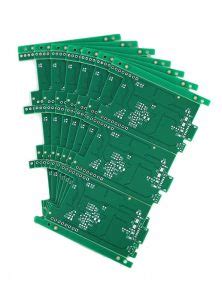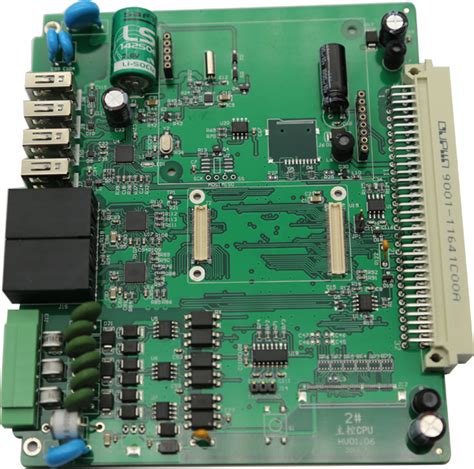Streamlining PCB Assembly Processes for Enhanced Performance
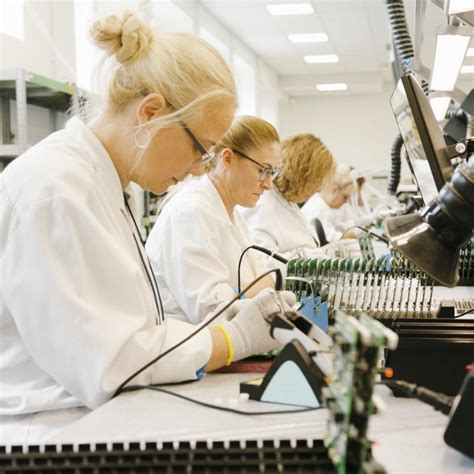
Key Takeaways
In the landscape of modern electronics, pcb assembly has become a critical factor in determining the overall success of electronic products. Understanding the intricacies of pcba processes is essential for manufacturers seeking to enhance performance and drive innovation. The ## Key Takeaways from successful strategies encompass a variety of elements, including the adoption of robust quality control measures, which ensure that each component meets high standards before assembly. Additionally, leveraging automation technologies can significantly reduce manual errors and cycle times, leading to a smoother workflow. It is also important to emphasize continuous training for personnel involved in pcb assembly, as keeping staff updated with the latest methodologies and technologies can result in marked improvements in productivity and quality.
Moreover, collaboration with suppliers on material selection plays a critical role in optimizing processes; choosing high-quality materials can make a substantial difference in the reliability and functionality of the final product. Lastly, implementing feedback loops within the manufacturing process allows for rapid identification and resolution of issues, translating into better outcomes for both productivity and product performance. By applying these insights into their operations, companies can not only streamline their pcb assembly processes but also set themselves apart in an increasingly competitive market landscape.
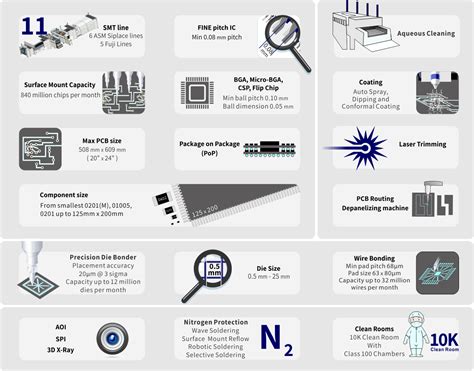
Introduction to PCB Assembly: Importance and Overview
The assembly of printed circuit boards (PCBs) is a critical process in the electronics manufacturing industry, serving as the backbone for a vast array of electronic devices. As we delve into the significance of PCB assembly, or PCBA, it becomes apparent that the quality and efficiency of this process directly influence the overall performance and reliability of electronic products. The intricate nature of PCBA involves several stages, including component placement, soldering, and inspection, each requiring precision and expertise. It’s essential to recognize that with the rapid advancements in technology, innovative processes are being developed to improve efficiency. These enhancements not only streamline operations but also reduce production costs and lead times.
"Efficiency in PCB assembly is not just about speed—it’s about achieving a balance between quality and productivity."
By understanding the importance of effective PCB assembly techniques, manufacturers can better address challenges such as component variability and manufacturing tolerances. As we progress into a more interconnected world, ensuring a robust assembly process becomes vital for maintaining competitive edge in this dynamic market environment. This foundational knowledge sets the stage for further exploration of key challenges and innovative strategies within PCB manufacturing to enhance performance outcomes.
Key Challenges in PCB Assembly Processes
The pcb assembly process is fraught with various challenges that can hinder the overall efficiency and performance of manufacturing operations. Among these, component placement accuracy stands out as a critical issue, as misalignment can lead to defective circuits, increasing waste and production costs. Additionally, the complexity of modern designs introduces further complications; with PCBA (Printed Circuit Board Assembly) often involving increasingly intricate layouts, managing these designs without compromising quality becomes essential.
Another significant challenge is the management of supply chain logistics. Delays in component delivery or sourcing issues can result in bottlenecks that disrupt the assembly line workflow. Maintaining adequate inventory levels while avoiding overstocking demands a strategic balance, which many manufacturers struggle to achieve.
The integration of advanced technologies also presents a challenge, as keeping pace with rapid innovations requires ongoing investment in training and equipment. Moreover, ensuring that all staff are well-versed in these technologies is crucial for maximizing their potential advantages.
To further illustrate these challenges, consider the following table that outlines key issues faced during pcb assembly:
| Challenge | Impact on Production | Potential Solutions |
|---|---|---|
| Component placement inaccuracies | Defects and rework costs | Enhanced training on machinery |
| Complex design management | Increased production time | Implementation of design-for-manufacturing |
| Supply chain logistics | Workflow bottlenecks | Strategic vendor relationships |
| Technology integration | Slower adaptation to innovations | Continuous staff training programs |
Addressing these challenges effectively requires an understanding of both current trends in manufacturing and a proactive approach to anticipating future hurdles in the evolving landscape of pcb assembly.
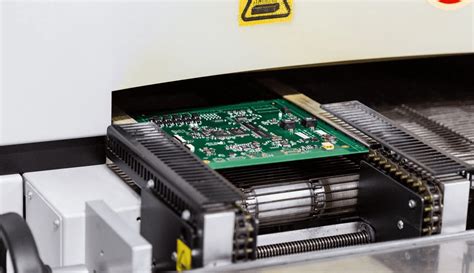
Innovative Strategies for Streamlining PCB Assembly
To enhance the efficiency and performance of PCB assembly processes, manufacturers are increasingly adopting innovative strategies tailored to meet the demands of modern electronics. One such strategy involves the integration of automated assembly lines, which significantly speeds up the production rate while reducing human error. This technological advancement not only improves precision but also allows for greater scalability, accommodating varying production volumes without compromising quality. Another key approach is the implementation of lean manufacturing principles, aimed at minimizing waste and optimizing resource utilization throughout the PCBA process. Employing techniques such as Just-In-Time (JIT) inventory control ensures that components are available when needed, reducing lead times and storage costs. Additionally, leveraging advanced software tools for design simulation and process visualization can facilitate better decision-making, helping engineers identify potential challenges early in the layout phase. Coupled with rigorous testing protocols, these strategies create a robust framework that supports enhanced performance in printed circuit board assembly. Overall, embracing these innovative practices not only streamlines PCBA operations but also positions manufacturers to remain competitive in a rapidly evolving industry landscape.
Best Practices for Enhanced Efficiency in PCB Manufacturing
Implementing best practices in PCB assembly (or PCBA) not only streamlines production but also significantly boosts overall operational efficiency. One of the core principles is to adopt a modular approach to design, which allows for easier assembly and potential reusability of components across different projects. Additionally, standardizing processes through the establishment of clear guidelines for each stage of assembly can minimize errors and reduce the time required for training new staff.
Using technologies like real-time monitoring systems can provide valuable insights into the assembly line’s performance. By analyzing data, manufacturers can identify bottlenecks and areas for improvement. Another key practice is to maintain a tight relationship with suppliers to ensure that all necessary components are available when needed, thus minimizing delays that can disrupt the flow of production in electronic manufacturing.
Furthermore, investing in automation where feasible enhances both precision and speed in pcb assembly tasks, allowing for quicker turnaround times without compromising on quality. Implementing regular maintenance schedules for machinery ensures sustained operation at peak performance levels. By fostering a culture focused on continuous improvement through feedback loops and regular training sessions, teams can stay ahead of industry advancements, ensuring that their PCBA processes remain both competitive and efficient over time.

Advanced Technologies Transforming PCB Assembly
The landscape of PCB assembly is undergoing a profound transformation, driven by the integration of advanced technologies that enhance productivity and precision. One of the key innovations is the adoption of automation in the pcba process, which minimizes human error and increases throughput. Automated equipment such as pick-and-place machines and soldering robots are becoming standard in manufacturing setups, enabling faster assembly of complex circuit boards. Furthermore, the emergence of smart factories equipped with the Internet of Things (IoT) allows for real-time monitoring and data analytics, helping manufacturers to optimize production lines and quickly address bottlenecks.
Utilizing advanced software for design and simulation plays a critical role as well; these tools enable engineers to visualize and test their designs before physical production, significantly reducing time-to-market for new products. Additionally, innovations like 3D printing are paving the way for rapid prototyping in PCB assembly, allowing companies to iterate designs swiftly and reduce waste materials during production. By embracing these emerging technologies, manufacturers not only enhance their operational efficiency but also improve the overall reliability and performance of their pcba, ensuring they meet consumer demands for high-quality electronic devices.

Case Studies: Successful Implementation of Streamlined Processes
In the realm of PCB assembly (often referred to as PCBA), numerous companies have successfully implemented innovative strategies that have significantly improved their assembly processes. For instance, one major electronics manufacturer adopted a lean manufacturing approach, focusing on reducing waste and optimizing workflows. By leveraging advanced automation technologies, they streamlined their production lines, enabling faster and more precise assembly of printed circuit boards. This approach not only minimized errors but also drastically cut down on production time, resulting in higher yield rates and overall efficiency.
Another case worth noting is a mid-sized company that incorporated real-time data analytics into their PCB assembly process. By monitoring key performance indicators throughout the manufacturing cycle, they identified bottlenecks and made data-driven decisions to enhance throughput. This strategy led to a remarkable improvement in turnaround times, allowing them to meet client demands more effectively while maintaining stringent quality controls.
Moreover, some organizations have explored strategic partnerships with equipment suppliers to integrate cutting-edge technologies tailored for specific assembly challenges. This collaborative effort has not only optimized PCBA procedures but also fostered an environment of continuous improvement, ensuring that these companies stay at the forefront of innovation in the rapidly evolving electronics industry.
By analyzing these real-world examples, it becomes evident that adopting advanced strategies and technologies plays a crucial role in streamlining PCB assembly processes. The ongoing commitment to embracing change and seeking out efficiencies is essential for organizations striving for excellence in manufacturing performance.
Future Trends in PCB Assembly Techniques
The pcb assembly industry is on the brink of a technological revolution, driven by the need for increased efficiency and responsiveness to market demands. One significant trend is the integration of automation and robotics in pcba processes, enabling faster production rates while minimizing human error. The use of advanced materials, such as flexible substrates and advanced soldering methods, is also becoming commonplace, catering to the growing demand for compact and lightweight electronic devices. Moreover, the rise of Artificial Intelligence (AI) within manufacturing processes promises enhanced data analytics capabilities, ultimately optimizing production schedules and resource allocation. This shift towards smart manufacturing not only improves the overall quality of pcb assembly but also paves the way for predictive maintenance, reducing downtime and prolonging equipment lifespan. Companies are increasingly investing in Internet of Things (IoT) technologies to facilitate real-time monitoring of manufacturing conditions, allowing for timely adjustments that refine workflow efficiency. As these trends continue to evolve, embracing innovative methodologies will be essential for manufacturers aiming to stay competitive in the dynamic landscape of pcba assembly.
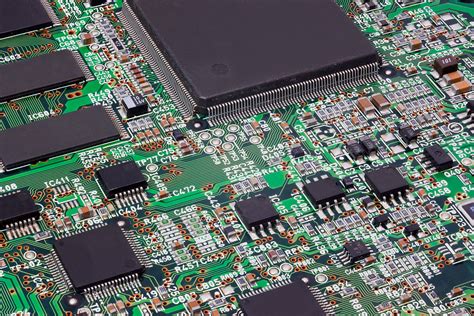
Conclusion: Achieving Excellence in PCB Manufacturing Processes
In today’s fast-paced electronics landscape, the pcb assembly process has evolved into a crucial aspect of manufacturing, where efficiency and precision are paramount. By adopting innovative strategies and advanced technologies, manufacturers can significantly enhance the performance of pcba operations. Organizations that focus on refining their assembly methods can minimize production time and reduce costs while maintaining the highest quality standards. Practices such as automated soldering, real-time quality control, and lean manufacturing principles play a vital role in achieving superior outcomes in PCB production. Moreover, successful case studies from industry leaders demonstrate that embracing these methodologies not only streamlines workflows but also fosters a culture of continuous improvement. As manufacturers look toward the future, staying updated on emerging trends and technologies will be essential for sustaining competitive advantage and ensuring excellence in pcb assembly processes. The integration of smart technologies and data analytics stands to redefine traditional practices, making adaptability and innovation key drivers of success in the ever-evolving field of PCB manufacturing.
Conclusion: Achieving Excellence in PCB Manufacturing Processes
In summary, achieving excellence in PCB assembly requires a multi-faceted approach that embraces both innovative strategies and robust best practices. The landscape of pcba is continuously evolving, pushing manufacturers to adopt new technologies that facilitate increased efficiency and performance. By focusing on elements such as automation, real-time data analytics, and streamlined workflows, companies can significantly enhance their assembly processes. Collaboration across teams and employing cross-functional insights are essential in identifying bottlenecks and implementing solutions that cater to specific operational challenges. Additionally, continuous training for staff on emerging tools and techniques ensures the workforce remains adept at navigating complex assembly tasks. As the industry moves forward, staying ahead of future trends will further solidify a company’s position in the competitive pcb assembly market. Embracing these methodologies not only boosts productivity but also ensures that manufacturers consistently deliver high-quality pcba products that meet customer expectations effectively. This comprehensive approach ultimately lays the groundwork for sustainable growth and innovation in PCB manufacturing processes.
FAQs
What is PCB assembly (PCBA)?
PCB assembly, often abbreviated as PCBA, refers to the process of soldering electronic components onto a printed circuit board (PCB). This is a critical step in creating functioning electronic devices.
What are the common challenges faced in PCB assembly?
Some prevalent challenges in pcb assembly include component placement accuracy, soldering quality, and managing production timelines. Each of these factors can significantly affect the overall performance and reliability of electronic devices.
How can I streamline the PCB assembly process?
Streamlining the pcba process can involve adopting innovative strategies such as implementing automated placement systems, optimizing workflow layouts, and leveraging advanced software for design simulations. These enhancements help reduce cycle time and improve product quality.
What are some best practices for efficient PCB manufacturing?
Best practices for achieving efficiency in pcb assembly include maintaining a clean and organized workspace, using high-quality components, conducting regular equipment maintenance, and training personnel on best manufacturing techniques.
What advanced technologies are currently transforming PCB assembly?
Technologies such as 3D printing, artificial intelligence (AI), and IoT-enabled devices are revolutionizing pcba by enhancing precision, monitoring processes in real-time, and facilitating predictive maintenance strategies.
For more information on how to implement efficient pcb assembly, please visit this link.


